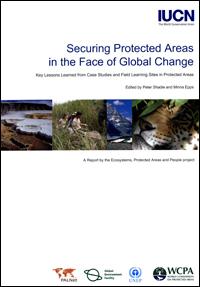Protected areas have proven themselves to be an effective tool for the conservation of biodiversity in situ. However, conserving biodiversity, even in protected areas, is a challenging assignment for most countries around the world where governments and local communities are often in competition for access to and use of resources. On top of these challenges, the world is facing changes in climate and sea level, increasing numbers of invasive species, and fragmentation of forests. People are demanding more food and fibre, while human settlement patterns press protected area boundaries. New institutional policies require new social arrangements among communities and government bureaus. Through a selection of field learning sites and case studies, this report presents a synthesis of lessons learned and invites readers to investigate areas of interest in more depth.
Securing protected areas in the face of global change : key lessons learned from case studies and field learning sites in protected areas
Complete Title
Securing protected areas in the face of global change : key lessons learned from case studies and field learning sites in protected areas
Description
ISBN
978-974-04-6136-4
Organization(s)
Imprint
Bangkok, TH : IUCN Asia Regional Office, 2008
Physical Description
49p. : ill.
Call number
More information
Publisher
Bibliographic level
Monograph/item
Physical medium
Printed
PDF
Number of library copies
2
Print availability status
Status unknown

